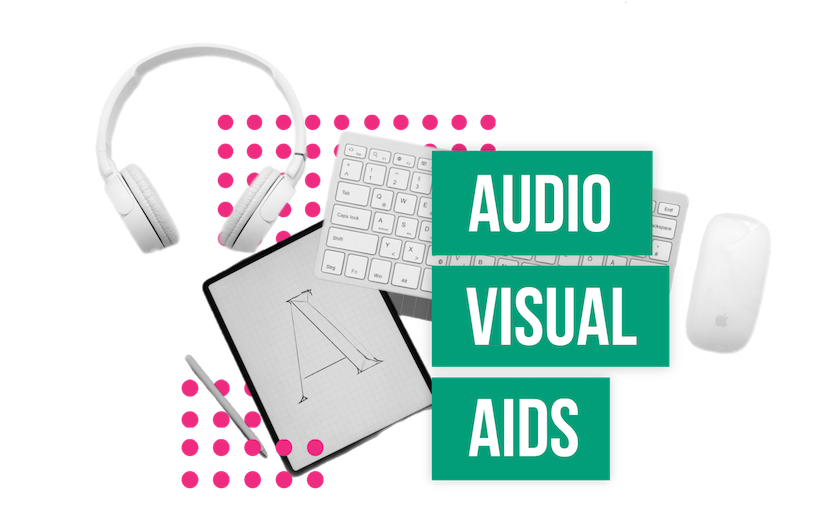
Audio Visual Aids are also called instructional material.
All aids which endeavor to make the knowledge clear to us through our sense are called “Audio Visual Aids” or Instructional Material. All these learning material make the learning situations as real as possible and give us firsthand knowledge through the organs of hearing and seeing. Therefore, any device which can be used to make the learning experience more concrete and effective, more realistic and dynamic can be considered audio visual material.
We learn through our sense organs. Senses are the ways of knowledge. All the sense organs help us in understanding the environment. Most of the knowledge, which we acquire from the school, comes through our ears and eyes.
- Audio Visual Aids Definition
- Objectives of Teaching Aids
- TYPES
- ADVANTAGES
- DISADVANTAGES
According to Burton: these are sensory objectives and images which stimulate and emphasis on learning process.
According to Carter V. Good: it is a trainable (motivation, classification and stimulation) process of learning.
According to Jhut — audio visual aids are devices that help the teachers to accomplish things quickly and effectively.
According to Crow & Crow – audio-visual aids gives learners the opportunity to benefit from vicarious experiences with people events, objects, ad cause and effect relationship.
According to E. C. Daint – audio-visual aids means that complete material, which helps to understand the written or oral subject matter in class room or in other teaching situations.
1. To enhance teachers skills which help to make teaching-learning process effective
2. To make learners active in the classroom
3. To communicate with them according to their capabilities
4. To develop lesson plan and build interest
5. To make students good observers
6. To develop easy and understandable learning material
7. To follow “adult centred” learning process
8. To involve intimation in objectives
9. To create interest in different groups
10. To make the teaching process more effective
It can be classified simply on the bases of sensory experience, because human beings derive their experiences mainly through direct sensory contact. Keeping this in view, it can be classified in to three main groups:
1. Audio Aids radio, podcasts, etc.
2. Visual Aids examples are charts, maps, mindmaps, infographics, pictures, models, flash-cards, etc.
3. Audiovisual Aids examples are videos, screencasts, etc.
1. It helps to make learning process more effective and conceptual.
2. It helps to grab the attention of students
3. It builds interest and motivation and improves their ability to learn
4. It enhances the energy level of teaching and students
5. It is even better for over burdened classrooms
6. It provides students with a realistic approach and experience
1. Technical Problems
2. Students Distractions
3. Expensive
4. Time consuming
5. Need Space
6. Convenience